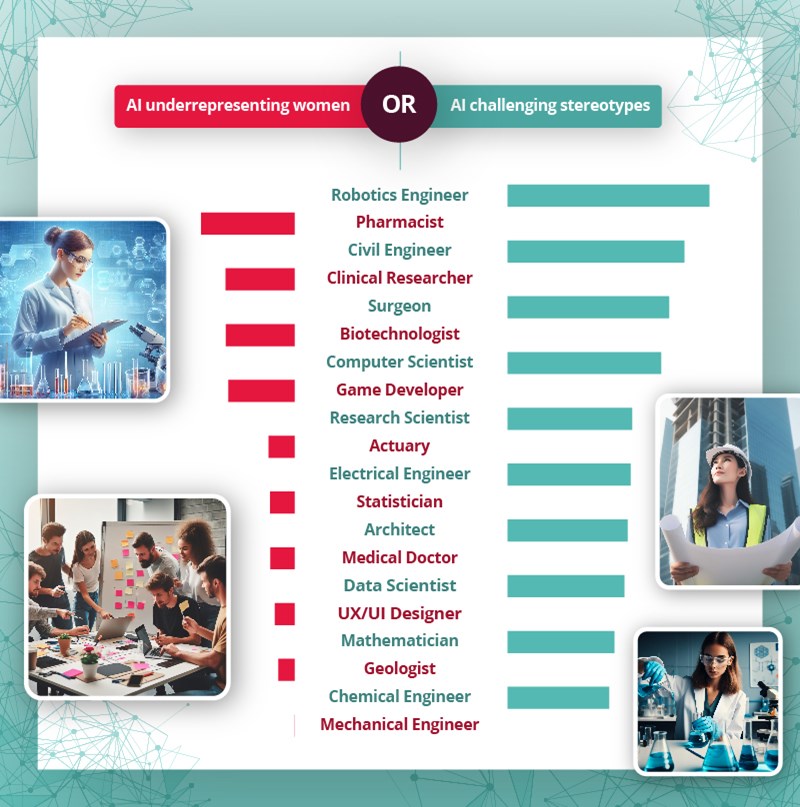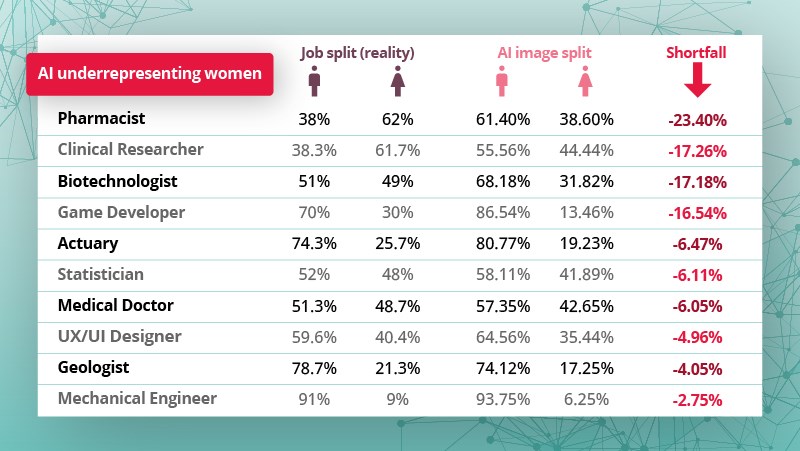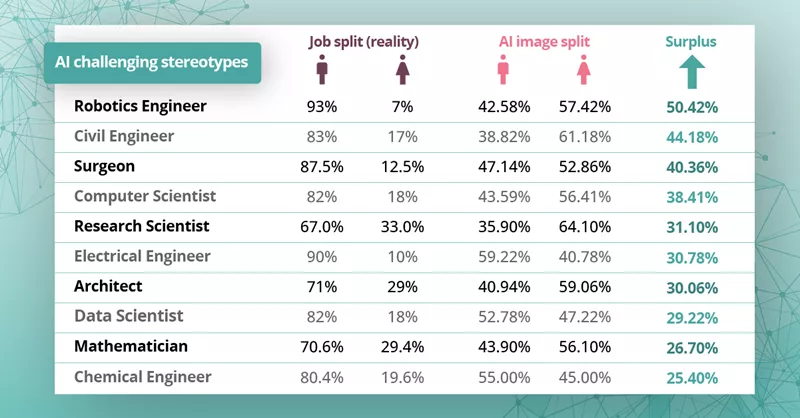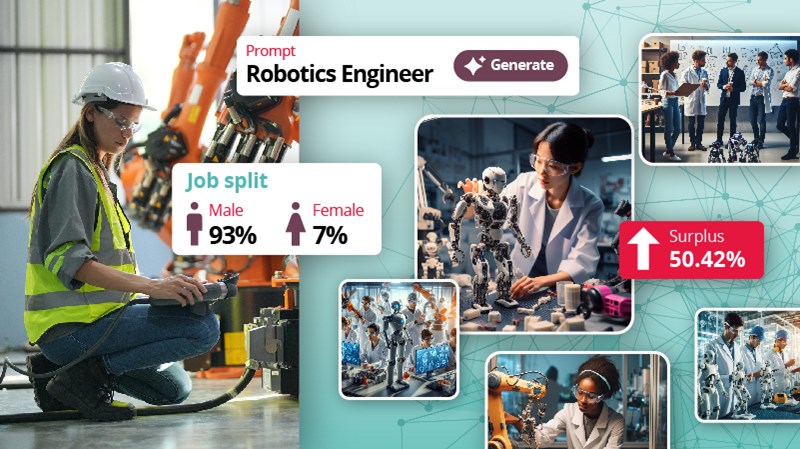-
- Curriculum content & assessment
- Overview
- Key Stage 3
- GCSE
- GCSE resits
- Functional skills
- Nationals
- International
- Pricing
- Customer stories
-
- Why Access Education?
- About Access Education
- Guides & webinars
- Meet our experts
- Blogs
A picture of women in STEM - Does AI conform to stereotypes
You probably remember this famous riddle. A father and son are involved in a car crash in which the father dies. The boy is taken to the operating theatre but the surgeon is unable to operate because the child is their son. The reason? The surgeon is the boy’s mother.

Living in more enlightened times, we’d like to think that a riddle like this would be easy to solve. But when asked to think of a surgeon, or an engineer or computer programmer, an – image of a man might spring to mind first, even if we quickly correct it afterwards. Human thoughts are grounded in the reality we experience and, since women are underrepresented in many STEM subjects and careers, it’s no surprise that stereotypes continue.

Around 27% of female STEM graduates today are female – an increase of just 2% since 2015. But while progress is slow, it is moving in the right direction, and there are notable gains within some STEM subjects.
Women are still most likely to work in physical sciences or mathematical sciences, but there has been growth in engineering technology, and computer science. The proportion of engineering technology has risen from 15% in 2015/16 to 21% in 2021/22 engineering, while the proportion of female computer science graduates increased from 16% to 24%.
The age of artificial intelligence (AI)
Now we are living in the age of artificial intelligence (AI), debates around all sorts of bias have intensified. Algorithms are ultimately trained by humans and they are at risk of emulating these biases, both conscious and unconscious, unless there are safeguards in place.
As AI image generators become more widely-used in marketing and the media, the pictures they generate will shape our ideas about who is most likely to work in a STEM role. That includes young people choosing their GCSE subjects, and planning their career. The good thing about AI is that algorithms can be trained to recognise and remove bias.
So do the images created by generative AI challenge or reinforce stereotypes about women in STEM? To find out we compared how AI perceives men and women in 40 professions.
Where is AI underrepresenting women?
Women working in life sciences are most likely to be underrepresented by AI image generators, according to our research. Top of the list is pharmacist, where women outnumber men by nearly a quarter. Similarly, women might account for almost 62% of clinical researchers – yet the AI images would have you believe they only represent 44.4%.


AI also challenges stereotypes
At the other end of the scale, our analysis revealed the roles where AI is turning stereotypes on their head.
Currently, just 7% women in robotics engineering – yet 57% of the AI images represented them in these roles. In civil engineering, only 17% of professionals are female yet they appeared in over 60% of AI images. It even confounds the riddle mentioned at the start of this piece by suggesting that almost 53% of surgeons are female when, in fact, it’s less than 13%.


What it means for schools
The problem, of course, is that when young people don’t see graduates and professionals who ‘look like them’ represented in STEM subjects they are less likely to consider them. A pupil’s idea of what it is to be a doctor, scientific researcher or an engineer might be influenced by the pioneers throughout history but also who they encounter in learning materials, on TV, in a university prospectus, and in their everyday lives.
For every female trailblazer throughout history – Marie Curie, Ada Lovelace and Rosalind Franklin – there are others who haven’t been recognised by history. There are also many more who didn’t even receive an education that would allow them to become a scientist or mathematician in the first place.
Emma Slater, Senior Product Manager, at GCSEPod, part of Access Education, said:
“The representation of women in STEM professions – whether in real-life, fiction or AI imagery – can have a bearing on the career paths they choose. As AI is adopted more widely, we all need to be mindful about how professionals from different industries are represented. Depending on how they are trained, AI algorithms can both reinforce or challenge existing stereotypes, as our analysis shows.
“Schools play a critical role in opening up STEM subjects to young women, laying the foundations for what could be a financially rewarding career and the chance to help tackle some of the biggest challenges of today like disease prevention, transport and climate change. Nationally, more women in STEM could drive innovation, contribute billions to the UK economy, and increase global competitiveness.
“There are already many inspirational teachers who are breaking down barriers and inspiring many young women towards a rewarding career. Education software can support them to do this inside and outside of the classroom, with engaging resources that bring subjects to life and are accessible via a phone or laptop.”
Methodology
We used Dall-E 3 to pull the image prompts for each job title and the first 50 images were used to calculate the gender split for each role.
This split was then compared to industry statistics to explore the differential between the ‘actual’ male and female workforce split for each role, and how AI represents this. The ones with the biggest differential demonstrate where AI is ‘underrepresenting’ women in these roles and those with the smallest show where AI is increasing female representation.
